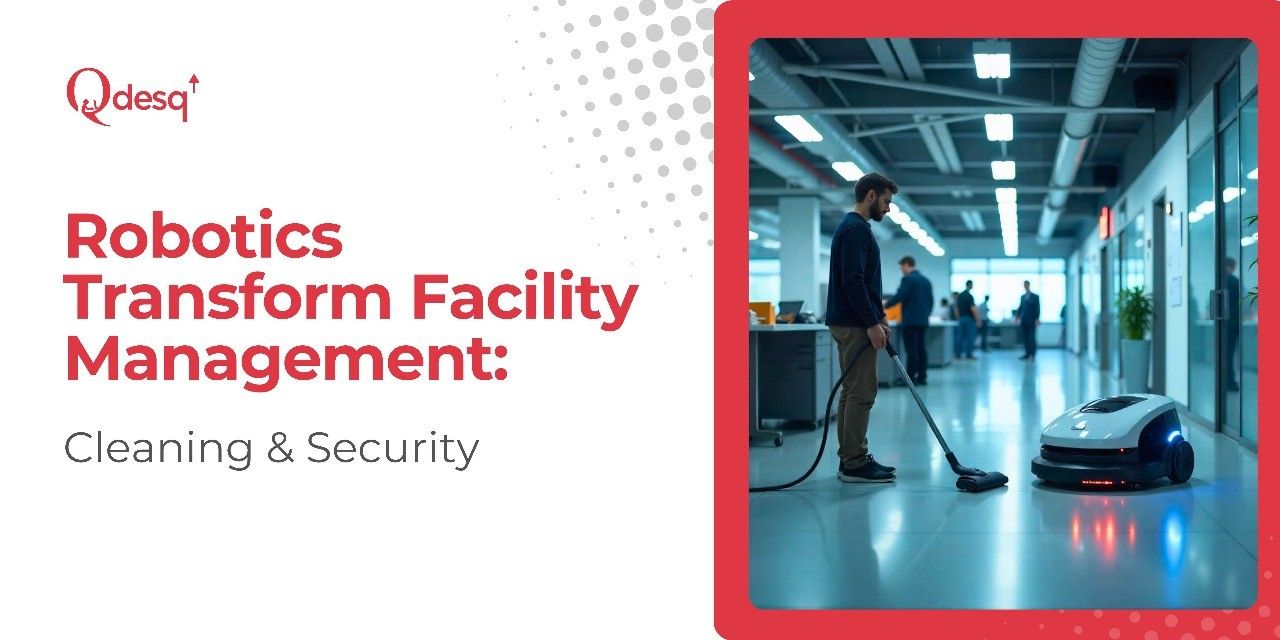The integration of robotics into facility management is reshaping how modern workplaces maintain cleanliness, security, and operational efficiency. This technological evolution addresses the growing needs of dynamic office environments, coworking spaces, and commercial complexes, ensuring facilities are safer, smarter, and more sustainable.
Here’s a structured exploration of how robotics is transforming key facets of facility management.
Elevating Cleaning Standards with Robotics
Keeping large offices and coworking spaces clean has always been a demanding task. It usually takes a lot of manpower and effort to maintain high hygiene standards throughout the day. This is where robotic cleaning systems step in, making a significant difference. Operating around the clock with remarkable consistency, these machines can clean floors, carpets, and hard-to-reach areas without requiring breaks or downtime.
Thanks to advanced sensors and intelligent navigation, cleaning robots skillfully manpower around obstacles and adapt to different layouts. This technology makes sure that no area is left untouched. Many of these robots also include robust filtration systems that trap dust, allergens, and other fine particles, improving indoor air quality. This contributes to healthier, more comfortable environments, which is especially important now as people prioritise wellness in the workplace.
Boosting Security with Autonomous Robots
Security remains a top priority for any facility, and robotics is playing an increasingly important role here. Automated security robots patrol sites with precision, equipped with tools like thermal imaging and facial recognition to detect anything unusual. They constantly scan their surroundings and relay important information to human security personnel in real-time.
Rather than replacing security teams, these robots work alongside them—covering large areas and tracking movements efficiently. This partnership enables faster threat detection and enhanced protection for employees, visitors, and assets. The continuous presence of robotic patrols helps create a secure environment in shared office spaces, where everyone feels safer and more at ease.
Shifting Maintenance to a Proactive Approach
- Maintenance traditionally involved waiting for scheduled inspections or reacting to issues after they occurred, often causing unexpected breakdowns and disruptions.
- Robotics enables a shift to predictive maintenance by regularly inspecting building systems with cameras and sensors.
- Robots monitor essential infrastructure such as electrical wiring, HVAC units, and structural components.
- Early detection of wear or malfunctions allows facility managers to plan repairs proactively before failures happen.
- This approach reduces downtime and extends the lifespan of equipment, leading to cost savings over time.
- Minimising interruptions ensures that office operations continue smoothly and efficiently for occupants.
Simplifying Waste Management and Promoting Sustainability
Managing waste can be labour-intensive and often overlooked in keeping facilities clean. Robotics offers innovative solutions to this challenge by automating waste segregation and collection. Smart waste bins and robotic carts now help sort recyclables from general trash, supporting environmental responsibility efforts.
This technology isn’t limited to large facilities; it is becoming accessible and affordable for small and mid-sized offices, too. Automated waste management systems minimise the need for manual labour, enhancing cleanliness and supporting businesses in achieving sustainability goals by reducing waste sent to landfills and promoting recycling.
Overcoming Hurdles: How to Successfully Adopt Robotics
Although robotics brings clear benefits, implementing these systems takes careful planning. High initial costs and technological complexity can be worrisome for many organisations. Starting with pilot projects and gradually expanding allows companies to better manage risks and clearly evaluate returns.
One vital step is training facility teams to work closely with these new technologies, making sure robots and people operate seamlessly together. This boosts acceptance and maximises the advantages that robotics offers. Additionally, since many robots are connected to company networks, strong cybersecurity measures must be in place to protect sensitive data and avoid disruptions.
The Future of Smart, Connected Facilities
The future of facility management will be shaped by increasingly sophisticated robotic systems that are combined with artificial intelligence and the Internet of Things. This will enable entire workplaces to function as smart ecosystems, where energy usage, security, cleaning, and maintenance systems all communicate and optimise themselves automatically.
Coworking spaces and managed offices stand to benefit immensely from this trend. Robotics will support clean, secure, and welcoming environments that enhance productivity and provide peace of mind for everyone using the space. As buildings become more intelligent, the quality of work-life will improve significantly.
Final Words
Robotics is revolutionising facility management, making it smarter, safer, and more sustainable. Adopting these technologies helps organisations elevate workspace standards and future-proof operations. To explore innovative coworking and managed office solutions that embrace technology and flexibility, visit Qdesq — your future-ready workspace partner for all workspace needs.











